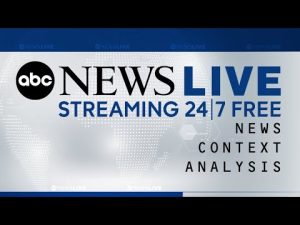The following video is brought to you courtesy of the Epic Economist YouTube Channel. Click the video below to watch it now.

The UN is warning that now – one year after widespread business shutdowns severely impacted economic activity, and governments’ extraordinary monetary response aggravated inflation – the situation is bound to get a whole lot worse, as food prices are going through the roof and neither wages nor employment rates are keeping up with the pace of such increases. That’s what we’re going to analyze in this video.
Even before the current recession, 35 million Americans were already food insecure, meaning they lacked access and means to afford enough nutritious food for themselves and their families. While millions of others were one or two paychecks away from needing help. Then, after the sanitary outbreak exploded, those vulnerable workers and households have fallen into a poverty spiral incredibly hard to recover from.
In 2020, more than 54 million Americans suffered from food insecurity, and now at least 42 million, or one in six, remain at risk of experiencing acute hunger in 2021, according to Feeding America, the nation’s largest anti-hunger organization. According to a report published by the Institute for Policy Research, “food insecurity has doubled overall, and tripled among households with children”.
As of January 18, nearly 24 million households – including 12.5 million households with children – reported to already be facing severe food insecurity. The fallout of the health crisis has inflamed the problem, but also shed a light on the fact that, in the world’s wealthiest country, a large chunk of the population doesn’t have the means to afford their most basic needs. A Federal Reserve survey found that 40% of Americans can not afford to pay an unexpected $400 bill. So in face of long-term unemployment or other financial strains, this lack of financial cushion created an economic shock and exacerbated an already existing hunger crisis.
During the early months of the sanitary outbreak, lockdown announcements triggered a massive panic-buying frenzy that lead to dramatic food shortages all over the country. Even though shortages of some essentials linger until this day, the reason why we still have massive lines at food bank distributions is not because we have a shortage of food supplies.
Yes, supply chain disruptions repeatedly occurred and caused short-term shortages when people started to run to stockpile non-perishable goods and cleaning supplies. However, the main determinant that is driving millions of Americans to face starvation is the growth of social inequality. Throughout the years, the American living standards were continuously deteriorated by reckless monetary policies that have put us on a hyperinflationary path and ended up expanding the wealth disparities while progressively rising food prices. Needless to say, in face of such a multi-layered crisis as the one we’re into, the government’s extraordinary monetary response has made the problem worse.
Food staples such as meat and grains have seen the highest spikes of about 40%. But the truth is, even with a leaner output, the amount of food produced in the world is enough to feed the entire global population. Food shortages mostly happen due to poor management issues and people continue to suffer from hunger as economies collapse and workers lose their ability to provide for themselves.
Another major issue no one seems to be talking about is the fact that, even though vaccines are starting to be distributed and that could put the health crisis behind us, after the last shots are given and politicians declare it’s the end, the hunger crisis will likely be – once again – swept under the rug, and all of those food-insecure people will remain in the same situation, as the reopening of the economy also means higher inflation, and therefore, higher food prices.
That is to say, as many of the problems that experts predicted last year have been deferred, and not solved, and our economy has significantly shrunk, more and more Americans are likely to be pushed to the brink of starvation. Even more tragically, their struggles might be made invisible as our leaders turn their eyes away from our real problems, and leave our great people fighting for crumbs while our economy dies. We should prepare for the worst since the good old days may never come back.
Epic website: https://www.epiceconomist.com”



